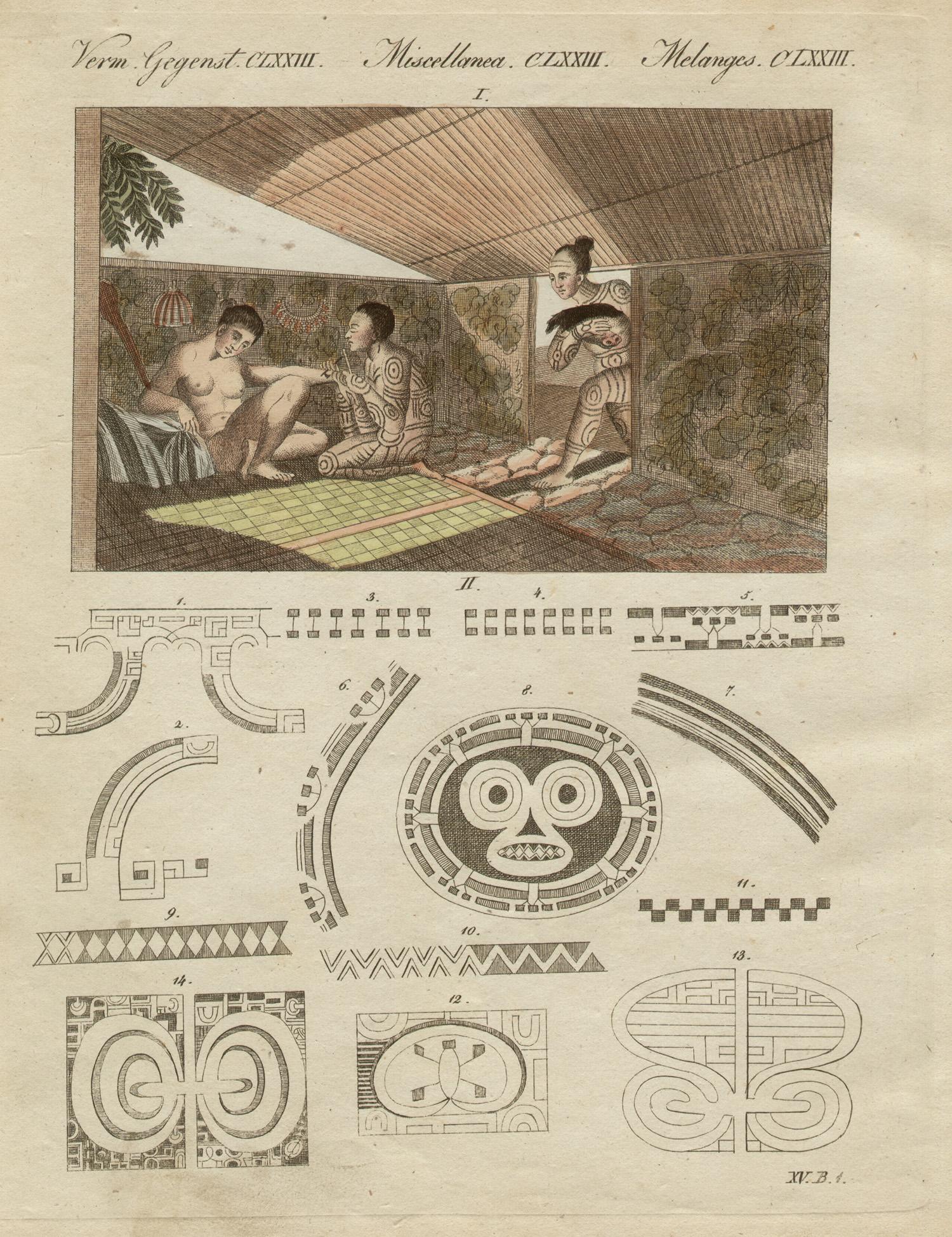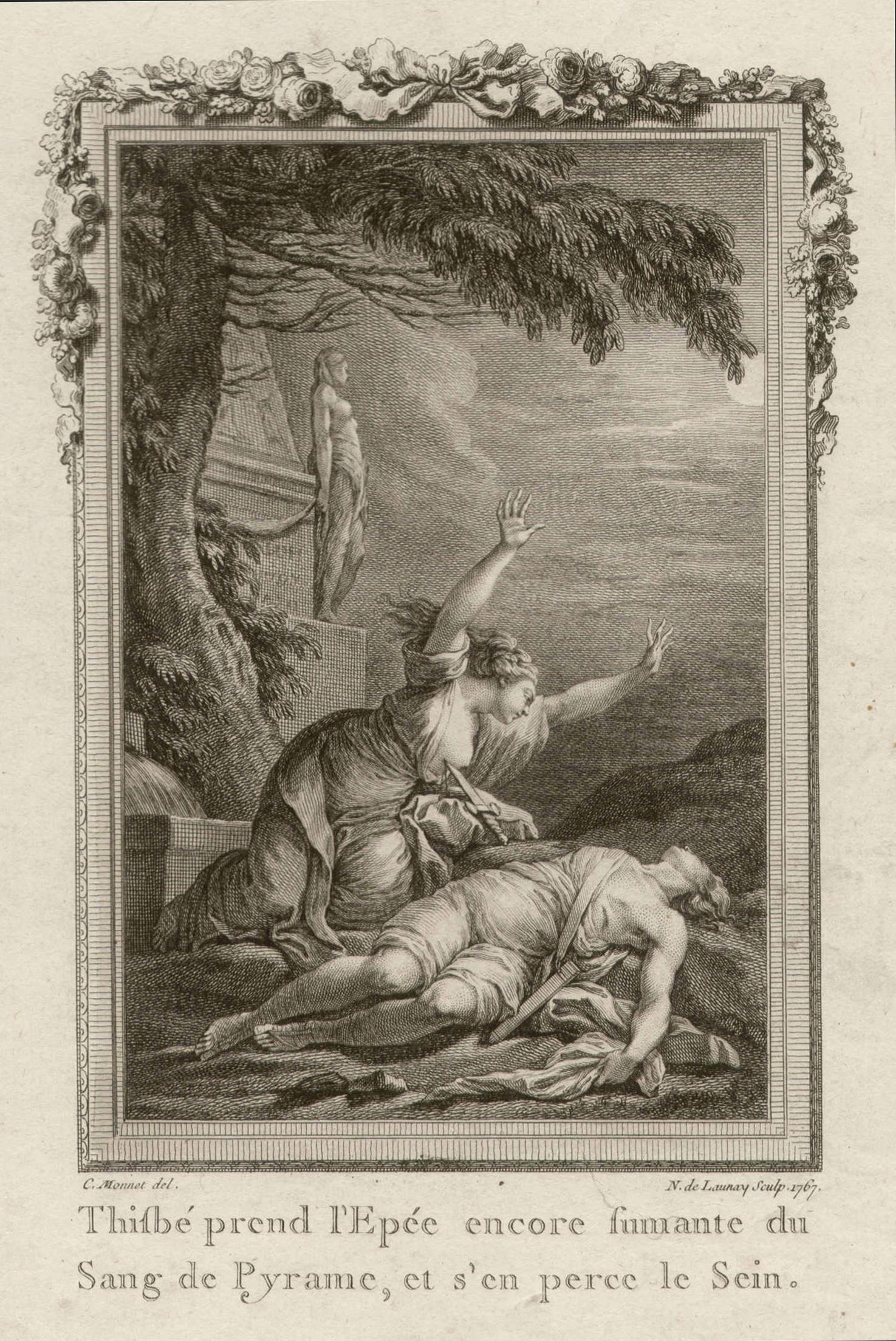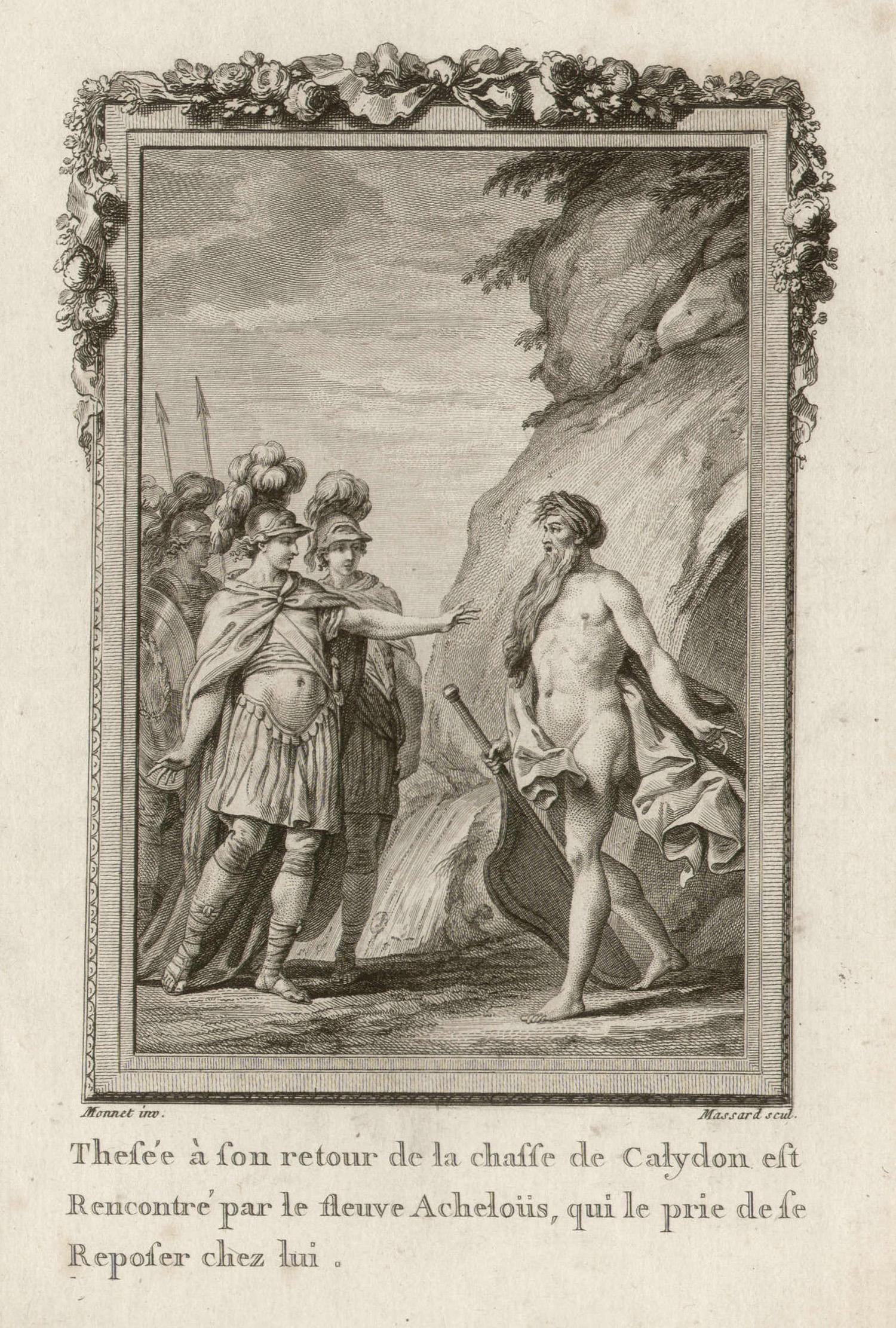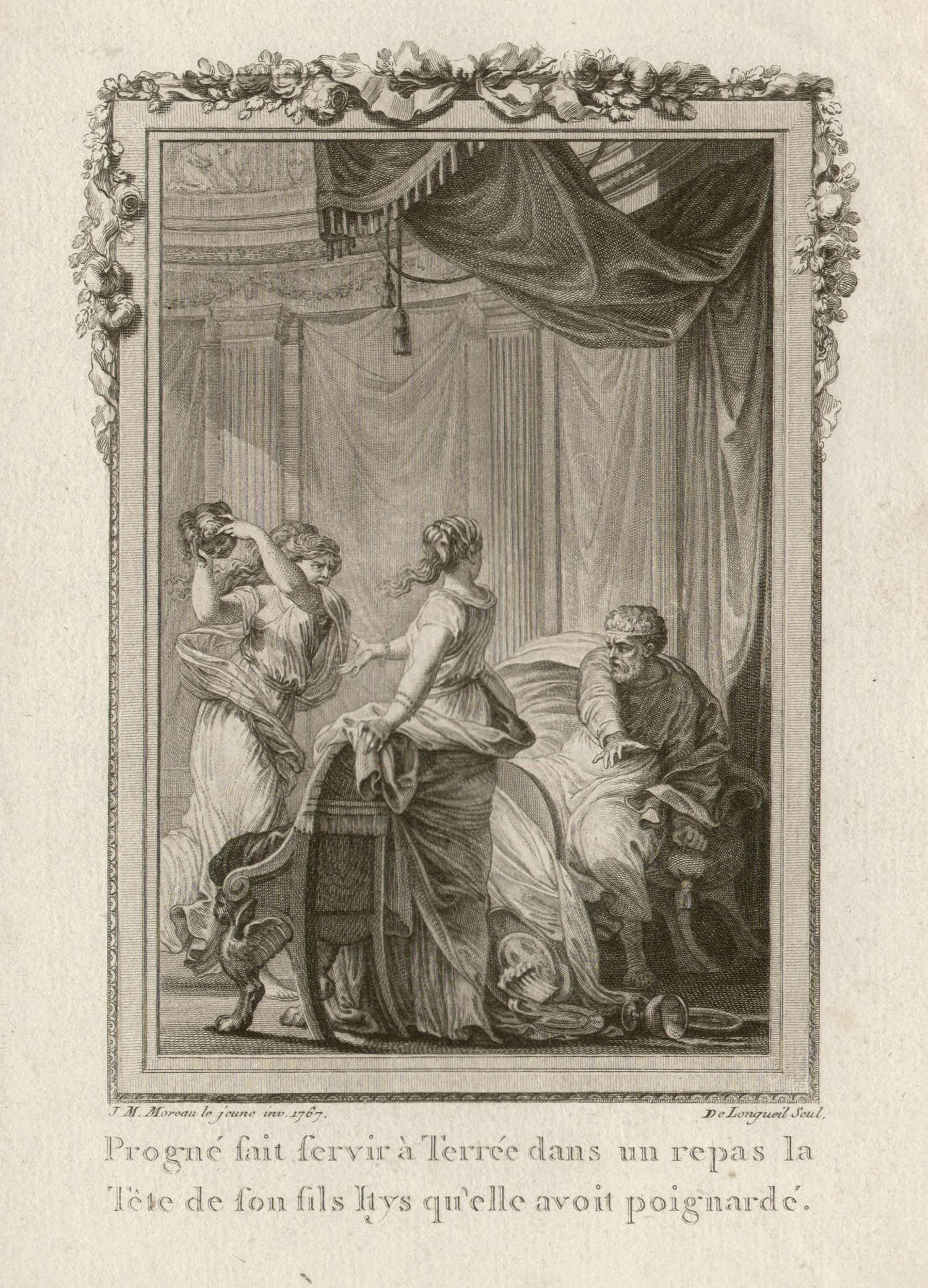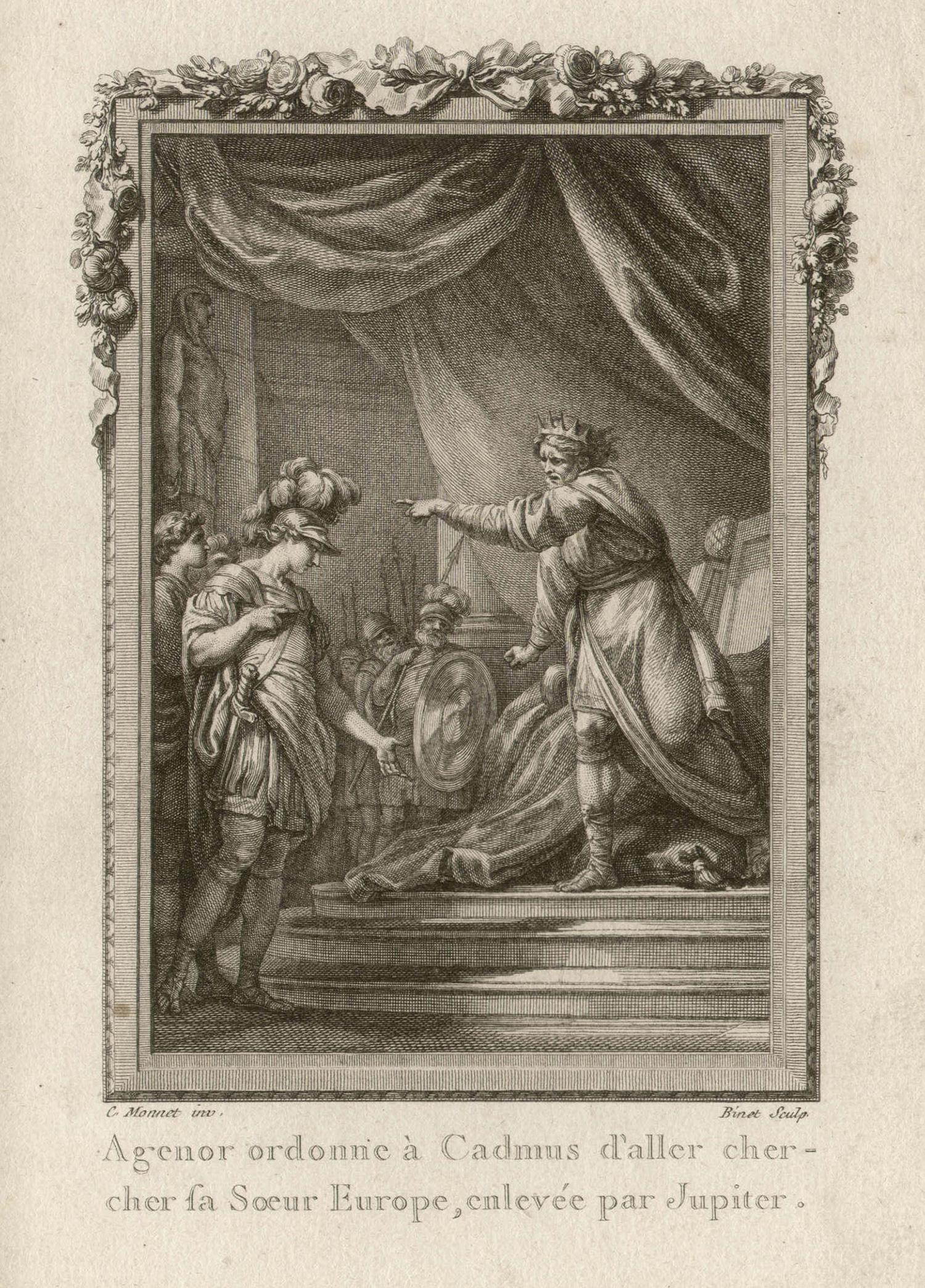Items Similar to Fresh Gathered Peas: An 18th C. Engraving From the Series 'The Cries of London'
Want more images or videos?
Request additional images or videos from the seller
1 of 8
Francis WheatleyFresh Gathered Peas: An 18th C. Engraving From the Series 'The Cries of London'1795
1795
About the Item
This is a beautifully framed engraving, printed in colors with additional hand coloring, from the famous "Cries of London" series, depicting the lives and professions of the common people of 18th century London, who worked the streets, hawking their wares. This engraving from the series entitled: "Fresh Gathered Peas, Young Hastings, Pois ramés Pois Nouveaux ecorcés", Plate No. 7 was engraved by Giovanni Vendramini after a painting by Francis Wheatley and published by Colnaghi & Co. in London in 1795.
"Fresh Gathered Peas, Young Hastings" depicts a man and a boy standing on a rustic horse-drawn cart. The man is emptying peas from a basket into the apron of a woman standing to the left of the cart. A child, who appears to want to help, and a dog are seen to the right of the woman.
This engraving is framed in an ornate gold-colored wood frame with double mats; a light beige silk outer mat and a teal blue inner mat. The frame measures 21.75" x 17.5" x 1.07". The print and frame are in excellent condition.
There are six additional framed engravings from the 'Cries of London' series available on 1stdibs that are presented in similar or identical frames. The reference numbers for the additional 'Cries of London' listings are: LU117326068762, LU117326068742, LU117326068772, LU117326068782, LU117326015272 and LU117326068802. These would make for an attractive and interesting display grouping of two, three or more prints. Additional discounts are available for purchase of a set, with a greater percentage price reduction offered for higher volume.
Although there were versions of the "Cries of London" created for centuries, the most well known and popular was this series, created by Francis Wheatley. Wheatley exhibited his 14 paintings of the "Cries" at the Royal Academy between 1792 and 1795. The publishing company Colnaghi & Co. were impressed by his work and agreed to publish a series of engravings after Wheatley's famous paintings. Thirteen of the fourteen paintings were engraved with a stipple technique by some the most noted engravers in England, including: Niccolo Schiavonetti, Giovanni Vendramini and Thomas Gaugain. These colorful prints give a glimpse of 18th century London's commoners, the peddlers, charlatans, street hawkers, milkmaids, and grocers who made their living on the city streets. They advertised their wares with musical shouts or melodic rhymes, which were a constant part of the sights and sounds of the city at that time. Wheatley grew up in Covent Garden among the hawkers with their cries echoing in the streets around the market. The old stone pillars of the market buildings still stand today. Wheatley's wife was also a painter and exhibited at the Royal Academy. She served as the model for the women in several of the scenes.
Two years before Wheatley exhibited his paintings at the Royal Academy, the forty-one year old painter had been elected to the Royal Academy over the King’s nominee. The king was upset at this and made sure that Wheatley never again received another of his or his nobles' commissions. The portraits of nobles had previously been Wheatley's main source of income. Ironically, what should have been the crowning glory of his career, instead turned out to be its ruin. Wheatley was declared insolvent in 1793 and struggled to make a living until his death in 1801, when the Royal Academy paid his funeral expenses. Yet in the midst of this turmoil, Wheatley managed to create these wonderful images of street sellers. Although they were seen at the time as of little consequence compared to his aristocratic portraits, are now the works that define his lasting reputation. His “Cries of London” series is considered by many as the most beautiful and most popular prints ever created on this subject.
- Creator:Francis Wheatley (1747 - 1801, British)
- Creation Year:1795
- Dimensions:Height: 21.75 in (55.25 cm)Width: 17.5 in (44.45 cm)Depth: 1.07 in (2.72 cm)
- Medium:
- Movement & Style:
- Period:
- Condition:
- Gallery Location:Alamo, CA
- Reference Number:
About the Seller
5.0
Platinum Seller
These expertly vetted sellers are 1stDibs' most experienced sellers and are rated highest by our customers.
Established in 2011
1stDibs seller since 2019
233 sales on 1stDibs
Typical response time: 1 hour
- ShippingRetrieving quote...Ships From: Alamo, CA
- Return PolicyA return for this item may be initiated within 7 days of delivery.
More From This SellerView All
- Flowering Cactus: Redoute Hand-colored Engraving "Cactus Opuntia Polyanthos"By Pierre-Joseph RedoutéLocated in Alamo, CAThis hand colored stipple engraving entitled "Cactus Opuntia Polyanthos, Cierge Raquette Multiflore" by Pierre-Joseph Redouté, Plate 59 from his illustrated publication 'Plantarum Historia Succulentarum ou Histoire des Plantes Grasses', published in Paris in 1799. Redoute was a pioneer of the stipple engraving technique, which he used to create this image. It involves utilizing a series of small dots worked into a copper plate rather than the more common lines. These dots can be made smaller or thicker depending on the degree of opacity the artist intends for various areas of the print. When inked and applied to paper, this allows for a greater portion of the paper to be seen, which accentuates the appearance of luminosity of the subject the artist is creating. Different color inks are used in the printing process, a time consuming technique known as "a la poupee". The engraving is then finished with watercolor to further enhance the beauty and realism of the print subject. This engraving of a flowering cactus is presented in a double mat; white outer mat and heather green inner mat.The mat measures 20" x 16" and the sheet measures 19.5" x 13.38". There are wide margins with a few short tears and chips along the the right and upper edges, which are all covered by the mat. There are small spots predominantly in the margins, but a few are present in the image area, but the print is otherwise in very good condition. There is another Redoute flowering cactus listed on 1stdibs, LU117326854582. The pair would make an attractive display grouping. Pierre-Joseph Redouté (1759-1840), was a painter and botanist originally from Belgium, who pursued his extremely successful artistic career in France. He is well known for his watercolor paintings of roses, lilies and other flowers and their subsequent folio-sized, color stipple engravings. Some believe him to be the greatest botanical illustrator of all time. Redouté was a favorite of the French royal court at the time and of the post French...Category
Late 18th Century Naturalistic Still-life Prints
MaterialsEngraving
- "New Mackrel": An Engraving From the 18th Century Series 'The Cries of London'By Francis WheatleyLocated in Alamo, CAThis is a beautifully framed engraving, printed in colors with additional hand coloring, from the famous "Cries of London" series, depicting the lives and professions of the common p...Category
Late 18th Century Naturalistic Figurative Prints
MaterialsEngraving
- Redoute Hand-colored Engraving of Cactus Flowers "Cactus Peruvianus Cierge"By Pierre-Joseph RedoutéLocated in Alamo, CAThis framed hand-colored stipple engraving entitled "Cactus Peruvianus Cierge du Pérou" by Pierre-Joseph Redouté, Plate 58 from his illustrated publication 'Plantarum Historia Succulentarum ou Histoire des Plantes Grasses', published in Paris in 1799. It depicts a branching limb of a cactus with a beautiful flower. There is a separate detail of the anatomy of a seed with early growth. Redoute was a pioneer of the stipple engraving technique, which he used to create this image. It involves utilizing a series of small dots worked into a copper plate rather than the more common lines. These dots can be made smaller or thicker depending on the degree of opacity the artist intends for various areas of the print. When inked and applied to paper, this allows for a greater portion of the paper to be seen, which accentuates the appearance of luminosity of the subject the artist is creating. Different color inks are used in the printing process, a time consuming technique known as "a la poupee". The engraving is then finished with watercolor to further enhance the beauty and realism of the print subject. This engraving of a flowering cactus is presented in silver-colored ribbed wood frame and a double mat; cream-colored outer mat and heather green inner mat. The frame measures 21.25" high by 17.25" wide by 1.13" deep. The sheet measures 19.88" high by 14" wide. There are wide margins with a few short tears and chips along the the left, right and upper edges, which are all covered by the mat. There are small spots predominantly in the margins, with a few present in the image area. The print is otherwise in very good condition. There is another Redoute flowering cactus listed on 1stdibs, LU117326853392, which is framed and matted identically to this one. The pair would make an attractive display grouping. Pierre-Joseph Redouté (1759-1840), was a painter and botanist originally from Belgium, who pursued his extremely successful artistic career in France. He is well known for his watercolor paintings of roses, lilies and other flowers and their subsequent folio-sized, color stipple engravings. Some believe him to be the greatest botanical illustrator of all time. Redouté was a favorite of the French royal court at the time and of the post French...Category
Late 18th Century Naturalistic Still-life Prints
MaterialsEngraving
- "Inspection Tour in the Wine Vaults", 1876 Philadelphia Centennial ExpositionLocated in Alamo, CAThis engraving is entitled "Philadelphia, PA- The Centennial Exposition - the Jury of Award on an Inspection Tour in the Wine Vaults of Agricultural Hall", ...Category
Late 19th Century Naturalistic Interior Prints
MaterialsEngraving
- An Engraving from the Series 'The Cries of London': "Turnips & Carrots"By Francis WheatleyLocated in Alamo, CAA beautifully framed hand-colored engraving from the famous "Cries of London" series, depicting the lives and professions of the common people of 18th ...Category
Late 18th Century Naturalistic Figurative Prints
MaterialsEngraving
- "Little Harvest Mouse": A Framed Original Audubon Hand-colored Folio LithographBy John James AudubonLocated in Alamo, CAThis rare original first edition Audubon hand-colored imperial folio-sized lithograph entitled "Mud Minimus Aud and Bach, Little Harvest Mouse, Males and Females, Natural Size" was e...Category
Mid-19th Century Naturalistic Animal Prints
MaterialsLithograph
You May Also Like
- The Art of Tattooing in Nuka, engraving with original hand-colouring, circa 1815Located in Melbourne, VictoriaNuka Hiwa is the largest island of the Marquesas. The Nukahivans were famous for their elaborate tattoos and headhunter trophy taking. From Bilderbuch Zum Nutzen und Vergnugen Der J...Category
Early 19th Century Naturalistic Figurative Prints
MaterialsEngraving
- Golf Match on Blackheath, antique sport wood-engraving, 1870Located in Melbourne, VictoriaWood-engraving. 1870. From the Illustrated London News of 26 March 1870 (text on the reverse). 275mm by 400mm (sheet)Category
Late 19th Century Naturalistic Figurative Prints
MaterialsEngraving
- Thisbe and Pyramus, Ovid's Metamorphoses, French Classical Myth engraving, 1768Located in Melbourne, VictoriaCopper-line engraving by Nicolas de Launay after Charles Monnet (1732-1808). Thisbe, finding the dead body of Pyramus, throws herself on a sword. Fro...Category
Mid-18th Century Naturalistic Figurative Prints
MaterialsEngraving
- Theseus and Achelous, Ovid's Metamorphoses, French Classical engraving, 1768Located in Melbourne, VictoriaCopper-line engraving by Massard after Charles Monnet (1732-1808). Theseus returns from the Calydonian hunt and is met by the river god Achelous. From...Category
Mid-18th Century Naturalistic Figurative Prints
MaterialsEngraving
- Procne and Tereus, Ovid's Metamorphoses, French Classical engraving, 1768By Binet after Charles Monnet (1732-1808)Located in Melbourne, VictoriaCopper-line engraving by De Longueil after JM Moreau the Younger. Depiction of Philomela and Procne showing the severed head of Itys to his father Tereus. From 'Les Metamorphoses d...Category
Mid-18th Century Naturalistic Figurative Prints
MaterialsEngraving
- Agenor and Cadmus, Ovid's Metamorphoses, French Classical engraving, 1768By Binet after Charles Monnet (1732-1808)Located in Melbourne, VictoriaCopper-line engraving by Binet after Charles Monnet (1732-1808). Agenor tells Cadmus to go and look for his sister Europae. From 'Les Metamorphoses d'...Category
Mid-18th Century Naturalistic Figurative Prints
MaterialsEngraving
Recently Viewed
View AllMore Ways To Browse
Make An Offer
Antique Series
18th Century London
Gathers Silk
London England Engraving
18th Century Women
Antique Market London
The Little King
18th Century Engraving Set
England Engraving Framed
Engravings England Set
Wood Horse Stand
Sets Of Colored Engravings
Stone 18th C
Boy And Dog
London Colored Engravings
18th Century Boy
Antique Wood Cart
